LPT Ports & Modes (SPP, EPP, ECP) - Parallel Direct Cable Connection - Pinouts - Transfer speeds
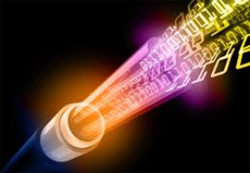 The Parallel Direct Connection is the second solution covering the transfer of data from one computer to another. The cable required is slightly more complicated as it has more wires that need to be connected, but the transfer speeds achieved make it well worth the time and effort required to make the cable. We'll also take a look at physical LPT ports, LPT modes (SPP, EPP, ECP), LPT port Pintouts, LPT direct connection cable and more.
The Parallel Direct Connection is the second solution covering the transfer of data from one computer to another. The cable required is slightly more complicated as it has more wires that need to be connected, but the transfer speeds achieved make it well worth the time and effort required to make the cable. We'll also take a look at physical LPT ports, LPT modes (SPP, EPP, ECP), LPT port Pintouts, LPT direct connection cable and more.
Users interested in transferring files using parallel direct cables can visit the following Microsoft support page which explains How to Install and Configure the Direct Cable Connection Feature (https://support.microsoft.com/en-us/kb/298446).
As we’ll see further below, there are three different type of LPT ports, SPP, EPP and ECP, each supporting different speeds and features, but all use the same direct cable connection.
A standard LPT port will provide speeds of 40Kb/s to 60Kb/s while the faster ECP ports will deliver up to 1.1 Mb/sec or 8.8 Mbps.
To better understand why parallel links are much faster than serial links, we’ll need to analyze the way data is transferred. This is clearly shown and explained in the diagram below:
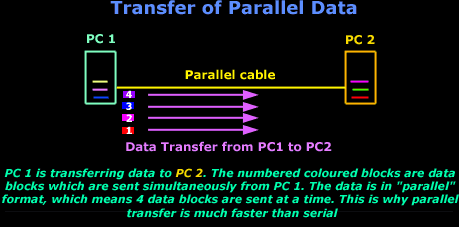
Figure 1. Transfer of Data via Parallel (LPT) Port
This diagram shows data transfer via parallel ports and we can see multiple data blocks being simultaneously transferred from one host to another, increasing significantly the overall throughput. Serial ports are capable of transferring one data block per time, therefore unable to match speeds of parallel ports.
What does the parallel port (LPT) look like?
The picture below shows a parallel port, also known as LPT port, on a computer:
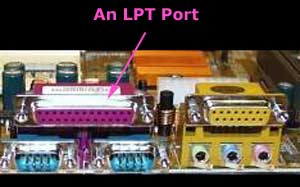
Figure 2. Physical LPT port on a computer motherboard
With older computers, you will always find the LPT port right above the two COM ports and it's usually color coded purple. When looking at an LPT port, it is impossible to identify whether the port is a SPP, EPP or ECP type because all three types visually look the same. and all LPT ports use DB-25 female connectors.
Examining the Different Type of LPT Ports
Before we begin analyzing the pin outs of the LPT port, let's have a look at the different type of LPT ports available. The diagram below shows all three LPT ports along with their supported speed and description:
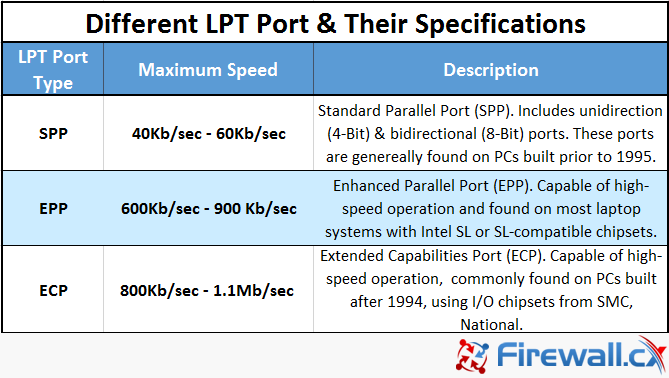
Figure 3. Different LPT Ports: SPP, EPP & ECP and their specifications
4-bit LTP Ports
The port can do 8 bit byte output and 4 bit nibble input. These ports are often called "unidirectional" and are most commonly found on desktop bus cards (also called IO expansion cards, serial/parallel cards, or even 2S+P cards) and older laptops. This is still the most common type of port, especially on desktop systems. 4 bit ports are capable of effective transfer rates of about 40-60 Kbps in typical devices but can be pushed upwards of 140 Kbps with certain design tricks.
8-bit LTP Ports
These ports can do both 8 bit input and output and are sometimes called "bidirectional ports" but that term is often misused by vendors to refer to 4 bit ports as well. Most newer laptops have 8 bit capability although it may need to be enabled with the laptop's vendor-specific CMOS setup function. This is discussed below. A relatively smaller percentage of LPT bus cards have 8 bit capability that sometimes must be enabled with a hardware jumper on the board itself. True 8 bit ports are preferable to 4 bit ports because they are considerably faster when used with external devices that take advantage of the 8 bit capability. Eight bit ports are capable of speeds ranging from 80-300 Kbps, again depending on the speed of the attached device, the quality of the driver software and the port's electrical characteristics.
EPP LTP Ports
Can do both 8 bit input and output at ISA bus speeds. These ports are as fast as 8 bit bus cards and can achieve transfer rates upwards of 600 Kbps. These ports are usually used by non-printer peripheral devices such as external CDROMs, tape drives, hard drives, network adaptors and more.
ECP LTP Ports
Can do both 8 bit input and output at bus speeds. The specification for this port type was jointly developed by Microsoft and Hewlett-Packard. ECP ports are distinguished by having DMA capability, on-board FIFOs at least 16 bytes deep, some hardware data compression capability and are generally featured more than other ports. These ports are as fast as 8 bit bus cards and can achieve transfer rates upwards of 1 Mbps and faster on PCs whose buses will support it. The design is capable of faster transfer rates in the future.
Let's now have a quick look at the pin outs of an LPT port:
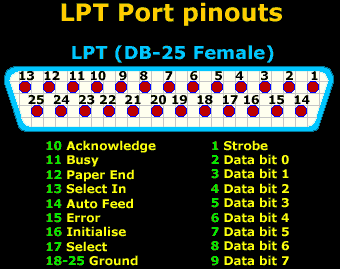
Figure 4. LPT Port Pinouts & their functions
The LPT Direct Connect Cable
As explained, there are different LPT ports, but all use the same parallel cable for direct transfer between two hosts.. Depending on your computer bios’s LPT settings you will be able to achieve different speed transfers as outlined previously.
The diagram below clearly shows the pin out configuration of the LPT Direct Connect Cable :
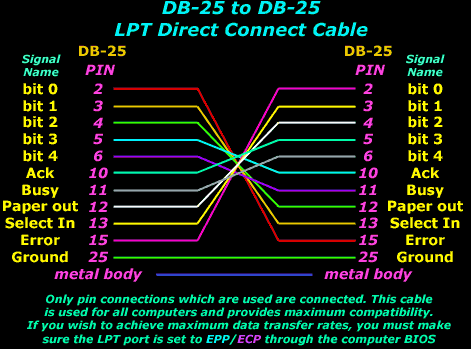
Figure 5. DB-25 to DB-25 LPT Direct Connect Cable Pinouts
We should note that one wire should be attached to the metal body of the male pins on both sides; this is also shown as the "metal body" on the diagram.
Next - Serial Direct Cable Connection, DB9, DB25, COM Ports and Pinouts or Back to Network Cabling Section
Wi-Fi Key Generator
Follow Firewall.cx
Cisco Password Crack
Decrypt Cisco Type-7 Passwords on the fly!














